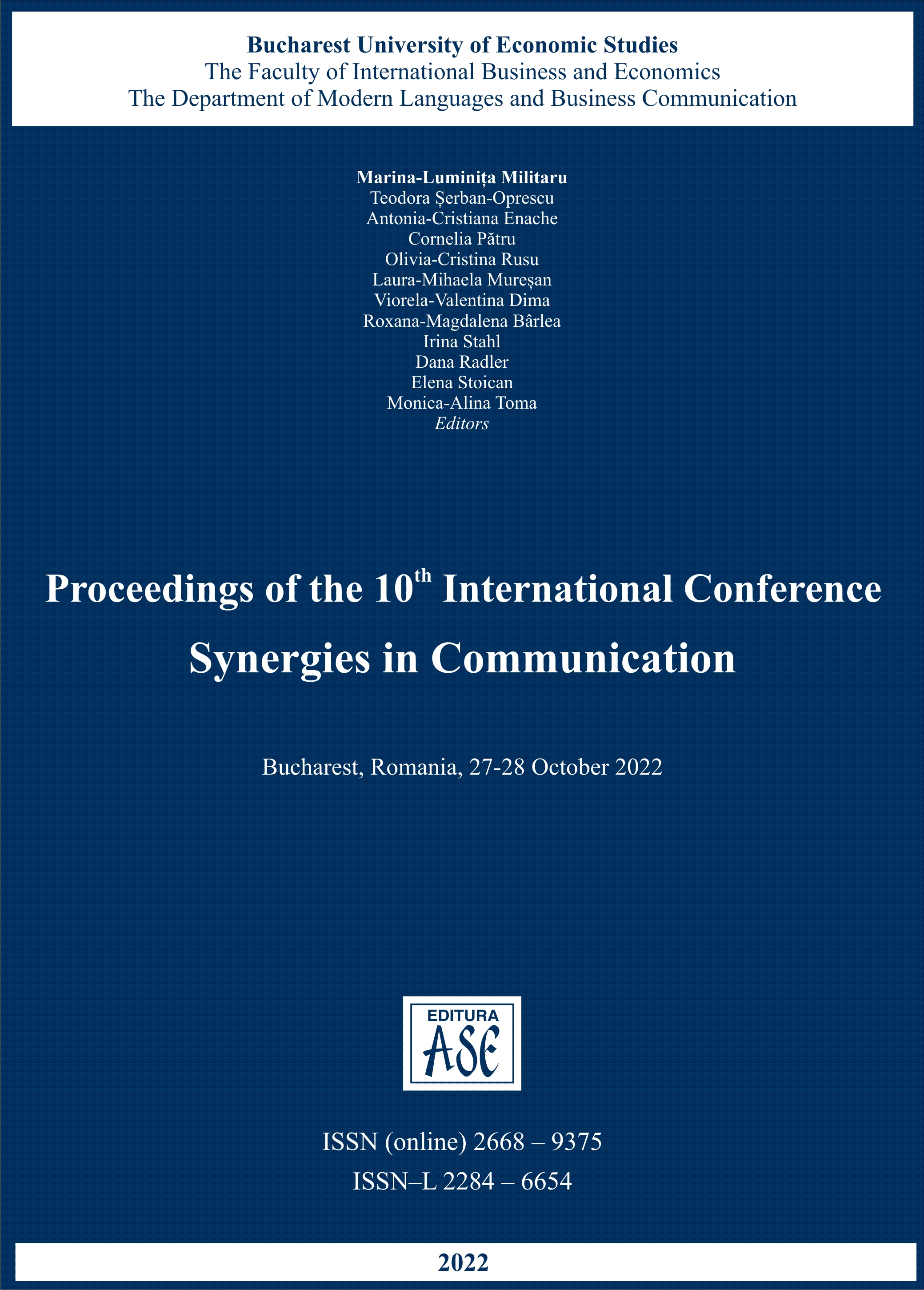UTILIZAREA CORPUSURILOR LINGVISTICE PENTRU ÎMBUNĂTĂȚIREA CONȘTIENTIZĂRII LINGVISTICE. CONFLUENȚE ȘI STRATURI ETIMOLOGICE, INTERFERENȚE LEXICALE ȘI ROLUL LOR ÎN PREDAREA ȘI ÎNVĂȚAREA LIMBII ROMÂNE ÎN MACEDONIA DE NORD
USING LINGUISTIC CORPUSES TO ENHANCE PRAGMATIC AWARENESS IN SECOND LANGUAGE ACQUISITION. ETYMOLOGICAL CONFLUENCES, STRATA AND INTERFERENCES IN TEACHING AND LEARNING ROMANIAN IN NORTH MACEDONIA
Author(s): Nicolae StanciuSubject(s): Foreign languages learning, Semantics, Language acquisition, Comparative Linguistics
Published by: EDITURA ASE
Keywords: etymological confluences and strata; Balkan linguistic league; semantical changes; stylistical specialization; contrastive and comparative analysis; second language acquisition;
Summary/Abstract: As well as other foreign languages learnt as second or third ones in universities, learning and teaching Romanian in Macedonia imply bridging, building and boosting vocabulary on etymological confluences, strata and lexical interferences, two main modalities to improving comprehension and to opening the gate to work with collocations and to undestanding the grammar. While writing some dictionaries in connection with the language spoken in the area, mostly Albanian, Macedonian and Romanian we created a quite rich corpus of more than 50 000 headwords stratified in their meaning like basic, secondary and metaphorical and exemplified by collocations and phrases meant to clarify the differences. Beginning with identification of a rich stock of words either archaical, colloquial or international, belonging to different etymological strata found in the Balkan cultures and languages such as Thracian, Latin, Slavic and Turkic, this article aims at suggesting some concepts and methods in second language acquistion that apply to Romanian as a mandatory subject at the levels A1-A2 and B1-B2. Contrastive analysis, linguistic comparison, etymological confluences and strata, as well as lexical similarities, have proven to be the most successful in supporting the research assumption that etymology remains an hermeneutical tool for investigating words’ history and meaning evolution, helps with understanding the deep meaning of words and phrases and contributes to the assessment of the role of a language in defining cultural ethnicity and identity.
Journal: Synergies in Communication
- Issue Year: 1/2022
- Issue No: 1
- Page Range: 260-268
- Page Count: 9
- Language: Romanian

